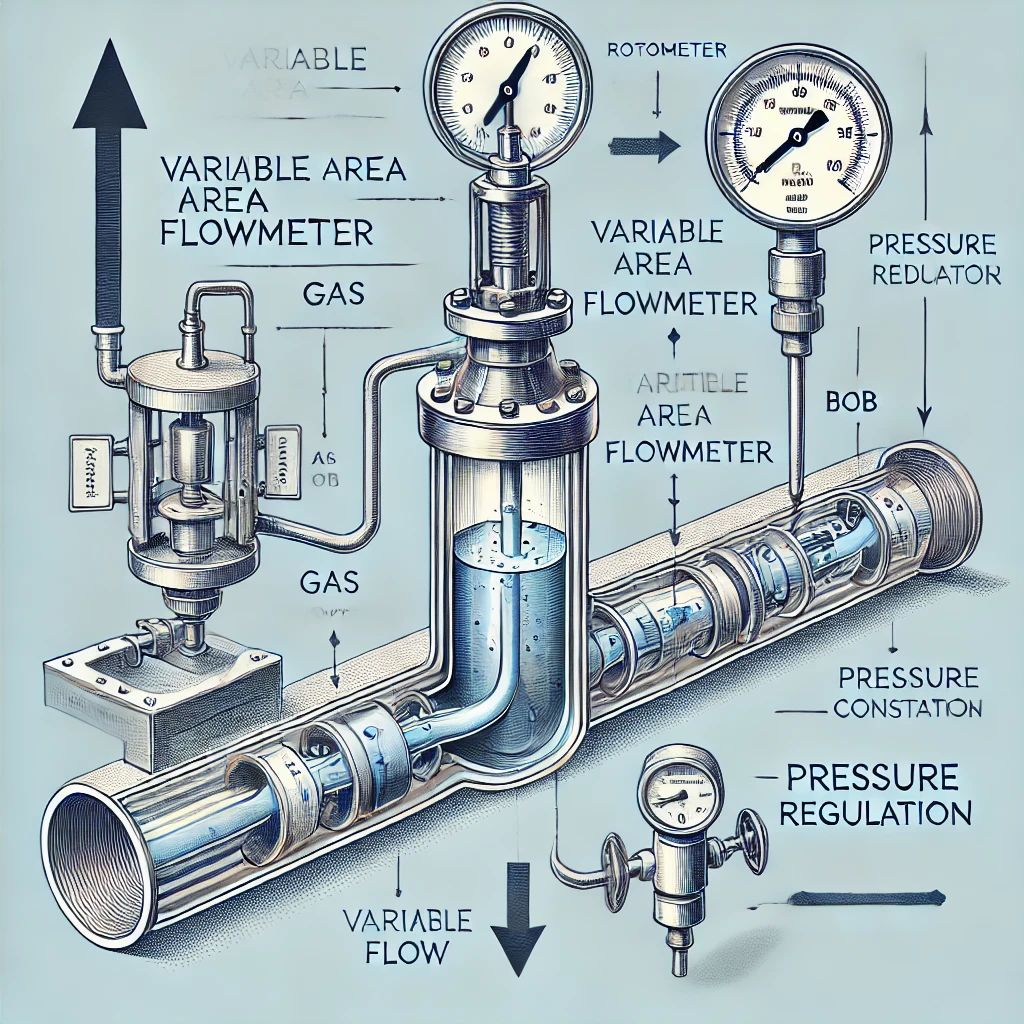
Optimizing Gas Flow Measurement with a Variable area flowmeter (Rotameter) and Pressure Regulation
Project Background
In one of our recent project. The end user faced challenges in accurately measuring gas flow from a cylinder using a Variable area flowmeter (Rotameter) . Initially, the pressure was high when the cylinder was full, but it dropped significantly as the cylinder emptied. This fluctuation affected the gas density, impacting measurement accuracy.
Flow Meter
Challenges:
Pressure Variability: High pressure when the cylinder was full and low pressure as it emptied.
Density Changes: Fluctuations in pressure led to changes in gas density, complicating flow measurement.
Flow Meter
Principles:
- Site Analysis: The system was thoroughly analyzed to identify the optimal location for the breather valve installation. This involved monitoring the chilled water line during operation to determine where air pockets formed most frequently.
- Valve Selection: A breather valve was chosen based on its compatibility with the existing chilled water system. The valve was selected to handle the specific flow rates and pressure ranges of the system, ensuring it could efficiently vent air without compromising the line’s integrity.
- Installation: The breather valve was installed at the identified high point in the chilled water line. The installation process included minor modifications to the pipeline to accommodate the valve and ensure a secure fit.
- Testing and Monitoring: After installation, the system was tested to ensure the breather valve was functioning correctly. This involved monitoring the flow rate, pressure, and temperature of the chilled water line to confirm that the air gap had been effectively eliminated.
Solution:
The implementation of the breather valve successfully resolved the air gap issue, resulting in the following improvements:
- Enhanced Cooling Efficiency: The elimination of air pockets led to a more consistent flow of chilled water to the condenser, improving the overall efficiency of the HVAC system.
- Reduced Maintenance Costs: The automatic operation of the breather valve reduced the need for manual venting and monitoring, leading to lower maintenance costs.
- Improved Equipment Longevity: By ensuring a consistent flow of chilled water, the risk of damage to the condenser and other associated equipment was significantly reduced.
Implementation:
The strategic use of a breather valve provided an effective solution to the air gap problem in the chilled water line, enhancing the performance and reliability of the HVAC system. This case highlights the importance of selecting the right components and understanding the specific needs of the system to achieve optimal results.
Results:
Stable Measurements: The pressure regulating valve provided consistent pressure, leading to stable and accurate gas flow measurements.
Improved Accuracy: With controlled pressure, the density variations were minimized, enhancing the reliability of our flow readings.
This case study highlights the importance of pressure management in gas flow measurement. By understanding and applying Boyle’s Law and the ideal gas law, we optimized our Instruments for better performance and accuracy.